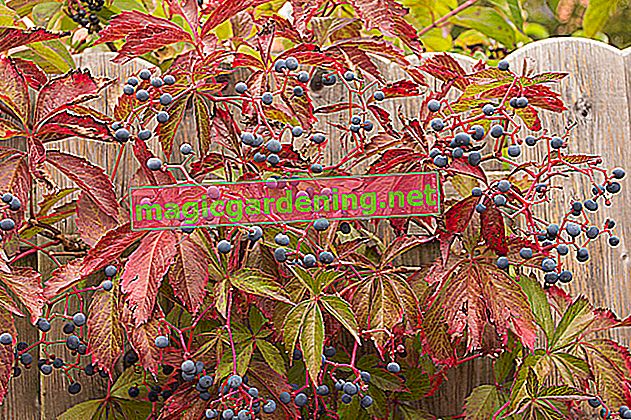
Wild wine berries are slightly poisonous
In June / July the wild wine blooms with rather inconspicuous, greenish-white flower umbels, from which pea-sized, spherical and bluish-black berries develop by October - at the same time as the autumn color. Visually, this ensemble is very nice to look at, and the fruits are very popular with many birds. Nevertheless, the berries are inedible for humans, even slightly poisonous: Not only the whole plant including the leaves and shoots, but above all the fruits contain a lot of oxalic acid. This can cause nausea, vomiting and diarrhea in children, sensitive people and animals.
also read
- Wild grape - planting maiden vines properly
- Wild wine is poisonous
- Wild wine - this is how to cultivate the virgin vine in the pot
Risk of confusion with grapevine berries
Despite the similarity of the name, the wild wine should not be confused with the grapevine and its edible fruits - the grapes. Although both species belong to the family of grapevines (Vitaceae), they belong to different genera and are therefore only very widely related to one another. While the wild wine belongs to the genus of the virgin vines (Parthenocissus), the noble grapevine is classified in the genus of the grapevines (Vitis).
Wild wine is purely an ornamental plant
Furthermore, no medicinal uses of the wild wine are known, neither from folk medicine of earlier centuries nor from today. From this it can be concluded that the wild wine is purely an ornamental plant and is not suitable for any kind of utilization - unless you include the use of its fruits as extremely popular bird food.
Tips
If you are looking for a beautiful climber whose fruits you can eat, the noble grapevine (Vitis vinifera subsp. Vinifera) - a subspecies of the grapevine - is the right choice for you.








